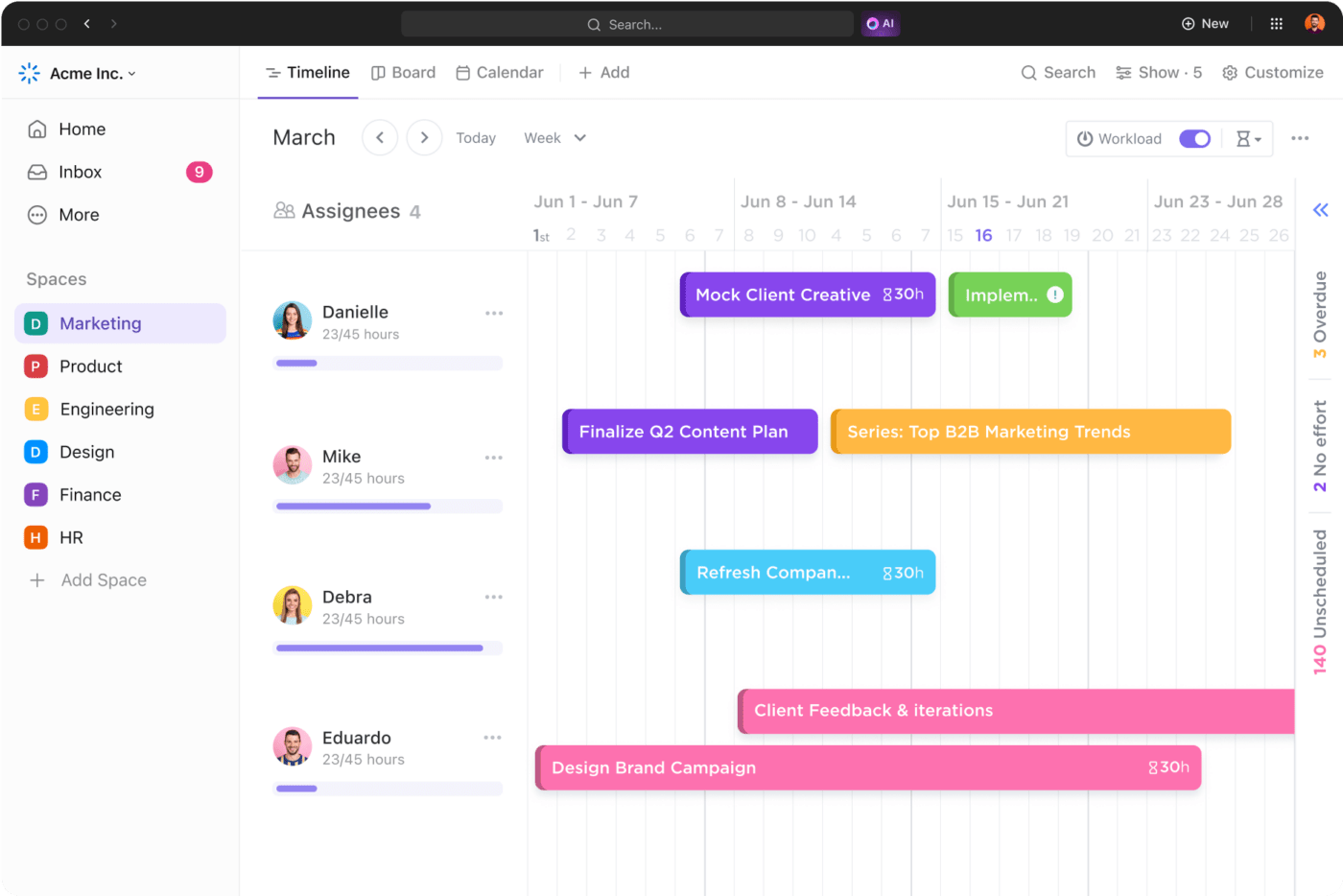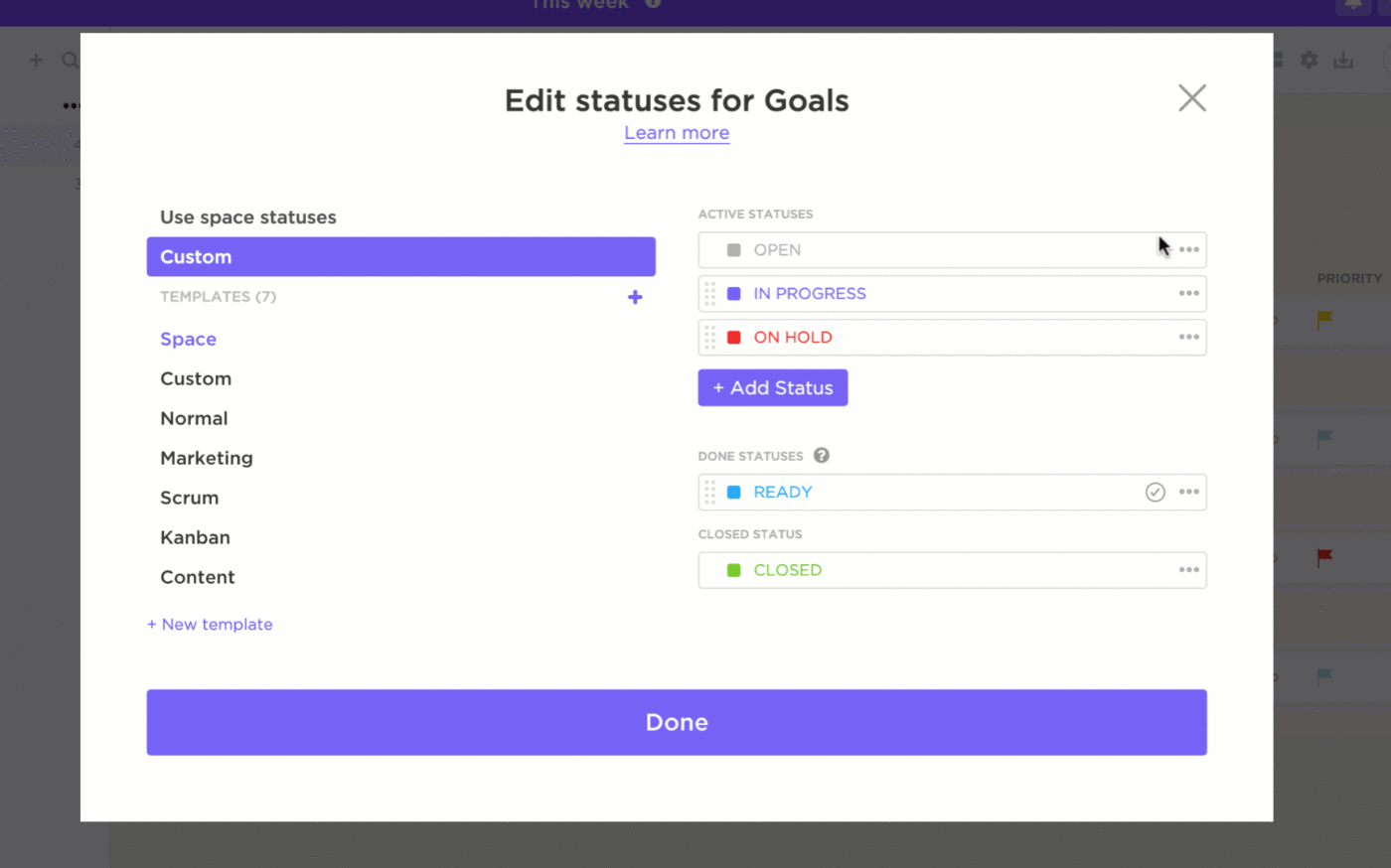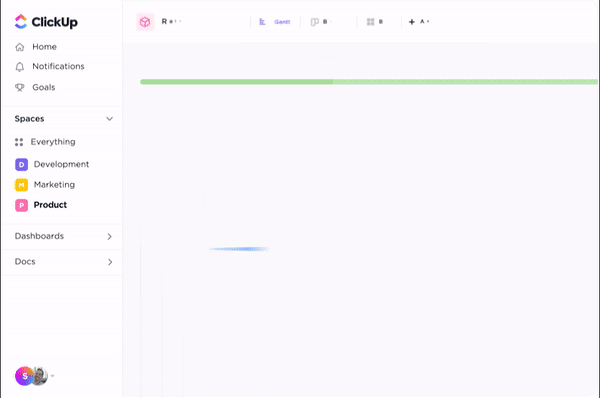Eat the Frog Technique: Go From Dreading to Doing!

Sorry, there were no results found for “”
Sorry, there were no results found for “”
Sorry, there were no results found for “”
Ever encountered a never-ending to-do list so overwhelming that you didn’t know where to begin? You struggle to focus on each task on the list but can’t seem to summon up the energy. At the same time, your deadlines keep getting closer, leaving you feeling stressed and exhausted.
If you’ve ever felt that way, know that help is at hand. We’ve got an effective way to conquer such a daunting situation—the Eat The Frog technique.
The Eat The Frog technique is a quick solution that gets you out of the procrastination rut! Allow us to show you a thing or two about the Eat The Frog technique and how you can use it to transform your day from chaotic to tranquil and productive.
Eat The Frog is a prioritization and productivity method that encourages people to pick the toughest task first.
The goal is to recognize one challenging task for the day (the frog) and complete it (eat it), preferably first thing in the morning; then, you’ll be all set for a productive day. If you have two urgent tasks, identify the more pressing one, i.e., the bigger frog, and conquer it first.
This approach counters the urge to put off the big and important tasks. After all, the longer they sit, the more overwhelming they get—sometimes to the point where you don’t feel like facing them at all!
The Eat The Frog technique helps you overcome mental barriers and puts you in a positive mindset so that you can seize the day.
The origin story of the Eat The Frog method is quite murky, but we did some snooping to find out.
It is popularly held that French writer Nicolas Chamfort wrote in the 1790s:
M. de Lassay, a very indulgent man, but with a great knowledge of society, said that we should swallow a toad every morning, in order to fortify ourselves against the disgust of the rest of the day when we have to spend it in society.
Translated from French to English
Some believe that American writer Mark Twain said something similar with an additional footnote:
If you have to eat a frog, don’t look too long. If you have to eat two frogs, don’t eat the smaller one first.
Either way, the essence of these quotes became the inspiration behind the productivity power move.
Fast-forward to 2001, when personal development author Brian Tracy popularized this productivity method in his book Eat That Frog! He fleshed out the concept and shared actionable strategies for living out the ideology. To date, this book has been on the frontline of driving productivity.

The book Eat That Frog! by Brian Tracy is a short, no-nonsense read and packs a bunch of specific, actionable tips anyone can implement. Here’s what stands out about Eat That Frog!:
Is it a silver bullet solution for all problems? Probably not. After all, one has to stay committed to eating frogs. So, you’ll have to participate actively in implementing techniques to overcome procrastination and drive productivity. But it is a great guide for getting you there.
You’ll find a few quotes from the book throughout this blog. These are powerful and insightful and will hopefully strike a chord with you.
The way eating the frog works boils down to the following core principles:

If you have to eat two frogs, eat the ugliest one first. This is another way of saying that if you have two important tasks before you, start with the biggest, hardest, and most important task first.

Rule: Continuous learning is the minimum requirement for success in any field.
We’d prescribe you an early-morning dose of eating the frog if you:
One of the very worst uses of time is to do something very well that need not be done at all.
So, now you understand the driving principles behind the Eat The Frog technique and whether eating the frog is right for you. This brings us to the next question—how does one eat that frog anyway?
Here’s a no-fuss, three-step guide to getting started with this prioritization and time management technique:
First, you need to identify the frog. This is your most challenging and important task on the day’s to-do list. However, it doesn’t necessarily have to be the most urgent one. An ideal frog is a balance between importance, urgency, and complexity. So look for a difficult task that demands more focus and energy and has a positive domino effect on your day. Also, keep an eye out for the one task that is most likely to get procrastinated.
Here are a few questions you can ask yourself while reviewing the day’s task list to identify this difficult task:
If you’re still stuck with many tasks, then build a prioritized list. The one topping this is your frog. Limit yourself to one frog per day. Remember, focus is the key here, so learn to deprioritize tasks wherever you can.
Everyone procrastinates. The difference between high performers and low performers is largely determined by what they choose to procrastinate on.
Here’s a quick example to walk you through the process of identifying the frog.
Imagine you have a presentation due tomorrow. Sure, finalizing the slide might be the most urgent task. However, you feel overwhelmed by the thought of writing an opening line. After all, the opening line woos the audience and sets the tone for the entire presentation. So, that’s the frog you need to start with.

Now that you’ve caught the frog, it’s time to feast on it!
Here’s what you can do to make the frog-eating session more bearable:
The most valuable tasks you can do each day are often the hardest and most complex. But the payoff and rewards for completing these tasks efficiently can be tremendous.

When everything is laid out neatly and in sequence, you will feel much more like getting on with the job.
Remember, starting with the big tasks would be uncomfortable. But once you conquer them, you’ll have the mental energy and the motivation to coast through the other tasks!
Let’s circle back to that example where you were supposed to work on your presentation. You’ve discovered that writing the opening line would be the frog you want to eat first. Here’s how you can go about it.
Don’t wait for inspiration to strike. Sit in front of the blank page and give yourself a solid 30 minutes—no emails, no social media, nothing. Just keep a few articles or quotes on the presentation topic handy to spark ideas and creativity.
Once you’ve warmed up, force yourself to brainstorm some opening lines—Tracy calls it forced efficiency. Jot down your options and let your creativity flow. You’re bound to hit the jackpot soon.
You have to develop a taste for eating the frog. After all, who likes to get tangled in the big tasks first?
The more you practice identifying and tackling frogs, the better you’ll get at task prioritization, time management, and powering through procrastination. Here’s what you can do to stay consistent:

Anytime you stop striving to get better, you’re bound to get worse.
These are just a few things you can do to cultivate the habit of eating frogs. We’ll share more tips later on how you can get better at demolishing those big tasks.
The Eat The Frog method offers several potential benefits. Here are some of the key ones:
To address the most difficult tasks first, you’re forced to prioritize your work and focus purely on the task at hand. Such an approach helps cultivate a deep work habit where you concentrate on just one task and work on delivering high-quality results for it. This deep work sets the tone for the day and keeps distractions at bay.
Conquering the frog during early work hours makes you feel more accomplished. At the same time, it frees up mental bandwidth and grants impetus to tackle the remaining daily tasks. All you have to do is keep up the momentum, and you’ll have an effortlessly productive day. Even if you don’t achieve anything else, you still would have done the toughest task—eating the frog!
Combating procrastination is the whole point of the Eat The Frog technique. When you face the most dreadful or overwhelming task head-on, you’re less likely to put off other items on your to-do list. It helps overcome procrastination and neutralizes its effect on your entire schedule!
If time management isn’t your strongest suit, the Eat The Frog method helps fine-tune this skill. It all starts by estimating how long it’ll take to eat the frog, which is the biggest time drain of the day. Working this out, along with proactive prioritization, makes you better at managing your schedule.
Everyone likes to stay in control of things at work. This goes for your schedule and task list as well. Eating the frog puts you in the driver’s seat. After all, you’re done with the important stuff first that requires your undivided attention. It helps structure your daily planning process. Staying in control allows for delegating smaller tasks or reallocating resources depending on workload and availability.
Eating the frog is a great mood enhancer. For one, completing the most important task will leave you feeling accomplished. Next, it allows you to plan ahead and stay in control. Most importantly, overcoming the worst eliminates any anxiety or other mental blocks that you may develop about the task or the project. Once you swallow the frog, you’ll notice how the ideas keep flowing out of you and how it’s so much easier to get work done!
A lack of focus and clarity are productivity killers. They can impede the decision-making process. However, when you decide to eat the frog, you’ve already reserved your mental energy, focus, and clarity for the big task and gotten to delegating tasks that are not as important. Once that’s out of the way, it’ll be easier to approach everything else with a sharper mind. Plus, the more you practice it, the better you get at identifying your frogs and making smarter decisions day after day.
Eating the frog is a great habit that helps strike the perfect work-life balance. By completing all your daily tasks on time and within schedule, you’re less likely to take them home with you. Plus, we’ve already mentioned how it’s a mood elevator. So you’ll be less stressed or anxious and more motivated.
Experimenting with the Eat The Frog technique can be rewarding. Here are some valuable tips and tricks that go beyond the basics to truly make this method sing:

Conquering those dreaded frogs can be exhausting, but ClickUp can help you power through! Here’s how:

ClickUp is a powerful task management software.
Remember what we said about learning to prioritize and deprioritize tasks while embracing this technique? It’s all a piece of cake with ClickUp Tasks. You can assign task priorities on ClickUp in just a few clicks to quickly identify the frog. These priority flags put the task at the top of your task list, staring you down and reminding you to gobble it down first thing in the morning.

ClickUp makes it easier to prep the frog before eating it. Rather than choking on one big bite, you can divide it into smaller, more manageable bites—subtasks. Create checklists for each subtask and pair them with smart resource allocation. This way, you’ll have everything available when it’s time to conquer the task.

Let’s face it: we all love doom-scrolling on social media! But ClickUp is the goalkeeper that prevents distractions from entering your focus zone. Use ClickUp to draw up a realistic estimate of how long it will take you to eat that frog. Once you have that clarity, carve out a dedicated time block in your schedule and get down to frog-eating without any interruptions.

ClickUp allows users to assign tasks, share projects, and exchange ideas with teammates. This helps tackle frogs that may require a collaborative effort. Whether it is brainstorming sessions over chat in ClickUp or illustrating concepts on interactive ClickUp whiteboards, the platform brings everyone on the same page. Such intentional communication ensures a smooth and successful frog-eating experience for you and your team.
ClickUp hosts a rich library of customizable templates that are an absolute game changer. The time-blocking templates are an absolute lifesaver for busy professionals.
There’s the ClickUp Schedule Blocking Template that you can use to plan your schedule—daily, weekly, or monthly. It allows you to get maximum work done in the minimum amount of time. You have four kinds of Custom Statuses to keep track of individual tasks and add details like location, type, etc., using Custom Fields. You can also use the Scheduling Form View to create a realistic schedule for yourself.
There’s also the ClickUp Task Management Template that you and your team can use to visualize your workload, prioritize tasks, and collaborate across teams. You can also switch between six dynamic views to visualize your tasks as a list, board, timeline, and more. It divides your to-dos into three lists of Action Items, Ideas, and a Backlog so you can focus on one area at a time.
Apart from these, there’s also the ClickUp Getting Things Done Framework. It offers clarity for planning out your day as you jot down your ideas, thoughts, and tasks and sort through them to get work done! Plus, you can choose to use either a doc or a whiteboard to put your ideas down!

It’s no exaggeration—you will love having ClickUp Brain as your personal assistant. It is an asset for implementing the Eat The Frog technique. From scheduling tasks based on priority to blocking my schedule to eat that frog—ClickUp Brain can do it all. It can even translate discussions, meetings, and Docs into tasks, making them more actionable. Call it a mini-project manager because it’s about to make your job so much easier!
While the frog metaphor may not sound appetizing, for all that’s worth, the Eat The Frog technique lays the solid foundation of productivity. Some might even say that frogs are the breakfast of champions.
Eat The Frog is simple yet impactful, and anyone can use it—from flustered students to busy professionals. All you need is the willingness to tackle the most difficult task first and the drive to see this through. Of course, a little assistance from tools like ClickUp to take you further on this journey.
Did we mention that you can get started with ClickUp for free? Sign up for a free account and see for yourself!
© 2025 ClickUp